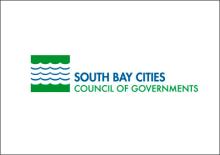California South Bay Cities Finish Fiber Network, Look to Smart Traffic Applications
A group of 15 cities in Los Angeles County, California, are closing in on the completion of the South Bay Fiber Network. The project, managed by the South Bay Cities Council of Governments (SBCCOG), will bring better connectivity to community anchors and enterprise customers in the region through a public-private partnership with American Dark Fiber (ADF).
According to a recent press release [pdf] from SBCCOG, some public facilities are already connected to the fiber ring, and the partners expect to finish the rest of the network by the end of the month. Once completed, the local governments hope that the SBFN will enable smart city applications, like traffic signal coordination, as well as telehealth services and remote learning and working.
Christian Horvath, Redondo Beach Councilmember, said in the press release:
The SBFN will allow us to serve all our residents better and improve their quality of life on so many levels including real-time transportation/traffic control connectivity . . . The Covid-19 pandemic has proven to any doubters that access to affordable and reliable high-speed Internet is even more important as it will allow the increasing numbers of city workers and local residents to efficiently work from home.
Public-Private Partnership
SBCCOG began its efforts in 2016 and has been working with consulting firm Magellan Advisors to plan the fiber network, which will be a mix of newly constructed infrastructure and leased fiber.
The SBFN will connect the cities of Carson, El Segundo, Gardena, Hawthorne, Hermosa Beach, Inglewood, Lawndale, Lomita, Manhattan Beach, Palos Verdes Estates, Rancho Palos Verdes, Redondo Beach, Rolling Hills, Rolling Hills Estates, and Torrance in Los Angeles County. Local institutions and government authorities are also participating in the fiber project, including the Beach Cities Health District, Los Angeles County Metropolitan Transportation Authority (LA Metro), Los Angeles County Department of Public Works, Lundquist Institute, South Bay Workforce Investment Board, and West Basin Municipal Water District.



